Fembio Specials Famous Italian Women Nancy Pelosi
Fembio Special: Famous Italian Women
Nancy Pelosi

Wikimedia Commons
(Nancy Patricia D'Alesandro Pelosi)
Born March 26, 1940 in Baltimore, Maryland
First woman Speaker, US House of Representatives (2007 - 2011, 2019 - present), US Congressional Representative from San Francisco, California (since 1987)
80th birthday March 26, 2020
Biography • Weblinks • Literature & Sources
Biography
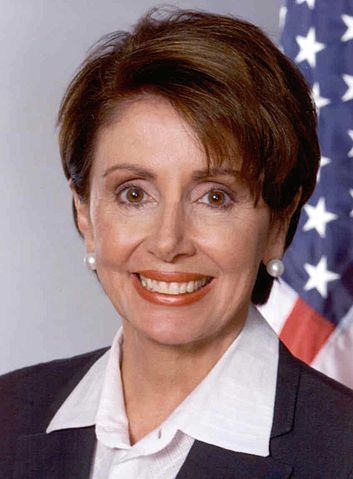 Although raised in a political family, Nancy D’Alessandro Pelosi did not originally plan on a career in politics. The wife and mother of five was almost 47 years old when she first ran for elected office; but once started, she has barely taken a breath. Praised – and cursed by opponents – as a brilliant and indefatigable political strategist and unrivalled fundraiser, the San Francisco Democrat has broken many barriers on her way to becoming the first female Speaker of the US House of Representatives, including being the first woman to serve as caucus whip and as minority leader in either party. She is also the first person after Sam Rayburn to be chosen as speaker a second time following her party’s regaining the House majority in 2018. Called “the strongest and most effective speaker of modern times” (Brookings Institution scholar Thomas Mann), Pelosi has managed to discipline her famously unruly Democratic flock to achieve impressive results, from AIDs funding in the 1990’s to the major health care law (Affordable Care Act), reforming Wall Street and saving the U.S. economy from collapse during her first year as speaker. Her legislative skills have brought about such progressive victories as the Lilly Ledbetter Act against pay discrimination in the workplace and the repeal of “Don’t-Ask-Don’t-Tell,” to allow gays to serve openly in the military.
Although raised in a political family, Nancy D’Alessandro Pelosi did not originally plan on a career in politics. The wife and mother of five was almost 47 years old when she first ran for elected office; but once started, she has barely taken a breath. Praised – and cursed by opponents – as a brilliant and indefatigable political strategist and unrivalled fundraiser, the San Francisco Democrat has broken many barriers on her way to becoming the first female Speaker of the US House of Representatives, including being the first woman to serve as caucus whip and as minority leader in either party. She is also the first person after Sam Rayburn to be chosen as speaker a second time following her party’s regaining the House majority in 2018. Called “the strongest and most effective speaker of modern times” (Brookings Institution scholar Thomas Mann), Pelosi has managed to discipline her famously unruly Democratic flock to achieve impressive results, from AIDs funding in the 1990’s to the major health care law (Affordable Care Act), reforming Wall Street and saving the U.S. economy from collapse during her first year as speaker. Her legislative skills have brought about such progressive victories as the Lilly Ledbetter Act against pay discrimination in the workplace and the repeal of “Don’t-Ask-Don’t-Tell,” to allow gays to serve openly in the military.
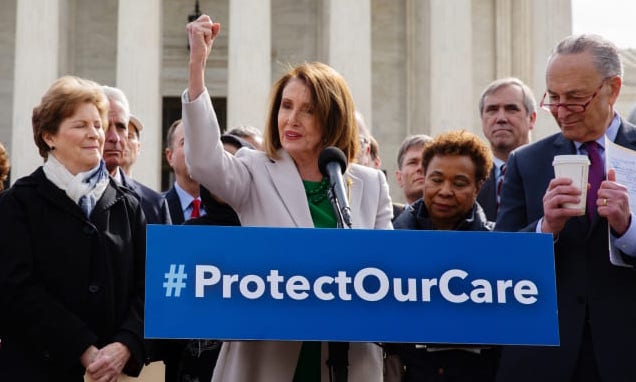
 At times during years when House Democrats were in the minority (from 2010 – 2016) Pelosi has had to withstand moves from within the party to step down and make way for younger leaders to emerge. The powerful female liberal has proven an ideal target for Republican election campaigns, which have demonized her as the face of the Democratic Party even more than Hillary Clinton in 2016. But Pelosi has so far brushed off both Republican attacks and attempts at mutiny from within her own party; her relentless determination to get things done and her own ability to play hardball are among the keys to her success.
At times during years when House Democrats were in the minority (from 2010 – 2016) Pelosi has had to withstand moves from within the party to step down and make way for younger leaders to emerge. The powerful female liberal has proven an ideal target for Republican election campaigns, which have demonized her as the face of the Democratic Party even more than Hillary Clinton in 2016. But Pelosi has so far brushed off both Republican attacks and attempts at mutiny from within her own party; her relentless determination to get things done and her own ability to play hardball are among the keys to her success.
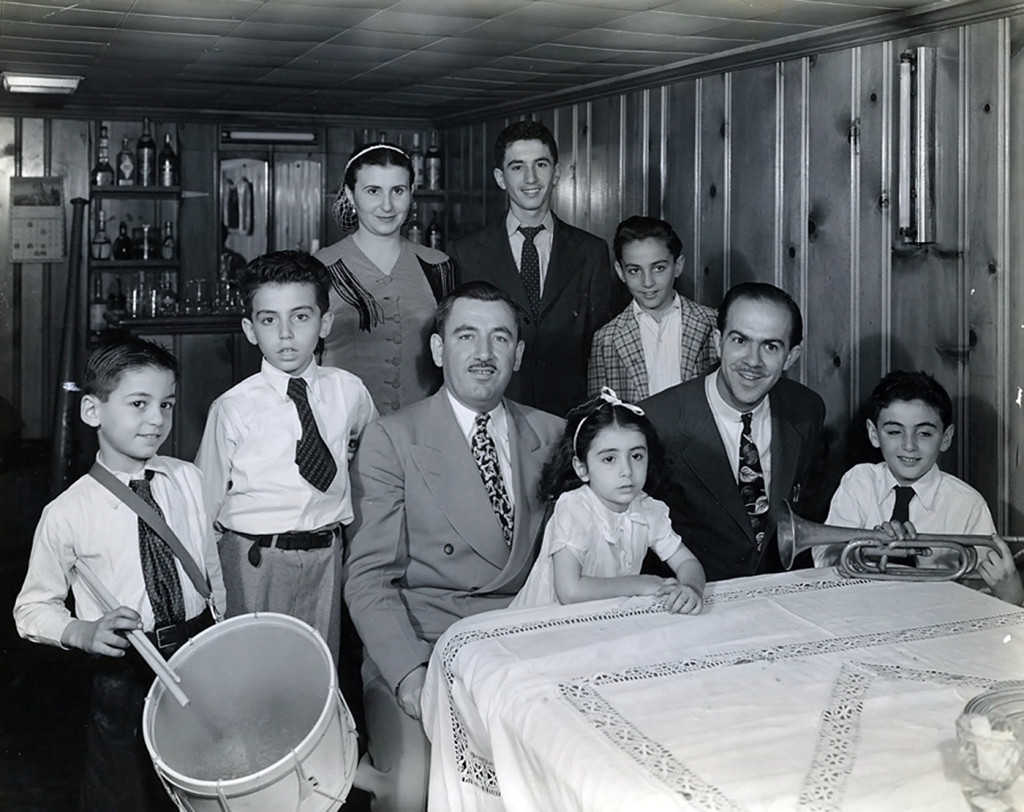 The youngest of seven children and only daughter of Thomas and Annunciata M. “Nancy” D’Alessandro, Nancy grew up learning the value of public service and the skills required for success in politics. Her father had served for two decades in the Maryland and US Congress before being elected mayor of Baltimore, and the family home, a hub of city Democratic operations, became a gathering place for local businessmen, union bosses and other “pols.” Pelosi’s mother was also active in political organizing, and even the children were enlisted in taking phone calls and stuffing envelopes. At all-women’s Trinity College Nancy majored in political science, and she completed an internship with Maryland Democratic Senator Daniel Brewster. She met her future husband, Paul Pelosi while taking a class at Georgetown University.
The youngest of seven children and only daughter of Thomas and Annunciata M. “Nancy” D’Alessandro, Nancy grew up learning the value of public service and the skills required for success in politics. Her father had served for two decades in the Maryland and US Congress before being elected mayor of Baltimore, and the family home, a hub of city Democratic operations, became a gathering place for local businessmen, union bosses and other “pols.” Pelosi’s mother was also active in political organizing, and even the children were enlisted in taking phone calls and stuffing envelopes. At all-women’s Trinity College Nancy majored in political science, and she completed an internship with Maryland Democratic Senator Daniel Brewster. She met her future husband, Paul Pelosi while taking a class at Georgetown University.
After marriage the couple eventually returned to his hometown, San Francisco, and had five children in six years. Nancy Pelosi’s executive and organizational abilities were honed managing the large brood, as a daughter recalls, with “ruthless efficiency” (Kroll). Pelosi would later comment: “Having five children in six years is the best training in the world for speaker of the house. When my children were young, time was my most precious commodity. It made me the ultimate multitasker and the master of focus, routine and scheduling.” (Povich 141-42).
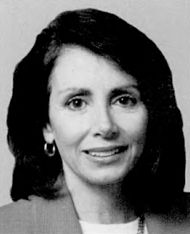 The family’s large home was soon the site of local Democratic meetings, and when the children were old enough, Pelosi became an active volunteer in Party activities, campaigning and helping raise money for candidates.
The family’s large home was soon the site of local Democratic meetings, and when the children were old enough, Pelosi became an active volunteer in Party activities, campaigning and helping raise money for candidates.
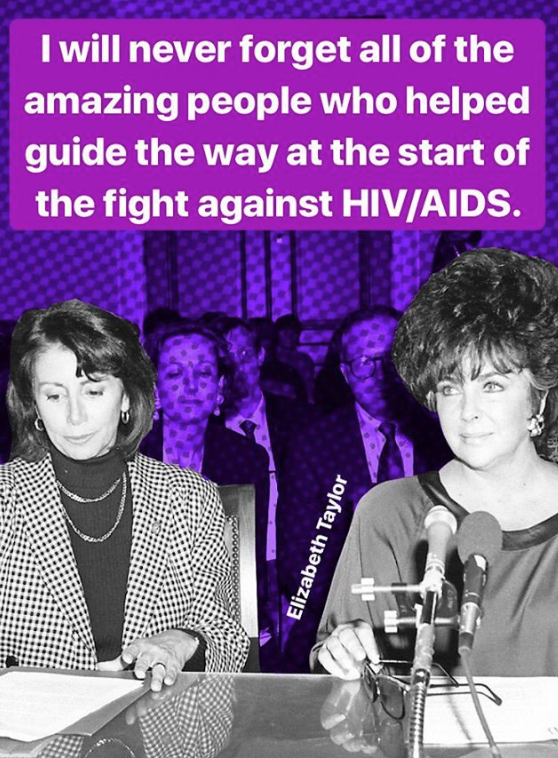 Her first major success came in 1976, when she orchestrated a Maryland primary victory during California Governor Jerry Brown’s run for president, for which she drew on her Baltimore connections as well as her political skills.
Her first major success came in 1976, when she orchestrated a Maryland primary victory during California Governor Jerry Brown’s run for president, for which she drew on her Baltimore connections as well as her political skills.
Her credentials thus established, she took on other offices, rising to chair the California Democratic Party and campaigning (unsuccessfully) for chair of the National Democratic Committee in 1984-85. In 1987 her close friend California Representative Sala Burton, then dying from cancer, asked Pelosi to run to replace her; she agreed reluctantly but fought fiercely as a newcomer and relative unknown to win the primary; she raised more than a million dollars, an unheard-of amount for a “local” election, and then coasted easily to final victory in her Democratic district.
-2.jpg) When she arrived in Congress in 1987 only 23 out of 435 members were women – there are now 102 – and Pelosi recalls they were treated more as a curiosity than as colleagues (Kroll). She had to struggle to have her ideas taken seriously, although she served on important House committees such as Appropriations and Intelligence during the 1990s. Her drive, determination and political skills – including as champion fundraiser for Democratic candidates – brought her to prominence as a highly effective legislator. In keeping with her liberal values, Pelosi early sponsored measures to increase funding for AIDS research and treatment and for promoting human rights in China. She successfully waged a hardball campaign to become party whip in 2001, and soon thereafter was elected minority leader – the first female of either party to hold these positions. In 2002 Pelosi led 126 Democratic votes against the resolution authorizing President Bush to use military force against Iraq, and she remained a harsh critic of the war.
When she arrived in Congress in 1987 only 23 out of 435 members were women – there are now 102 – and Pelosi recalls they were treated more as a curiosity than as colleagues (Kroll). She had to struggle to have her ideas taken seriously, although she served on important House committees such as Appropriations and Intelligence during the 1990s. Her drive, determination and political skills – including as champion fundraiser for Democratic candidates – brought her to prominence as a highly effective legislator. In keeping with her liberal values, Pelosi early sponsored measures to increase funding for AIDS research and treatment and for promoting human rights in China. She successfully waged a hardball campaign to become party whip in 2001, and soon thereafter was elected minority leader – the first female of either party to hold these positions. In 2002 Pelosi led 126 Democratic votes against the resolution authorizing President Bush to use military force against Iraq, and she remained a harsh critic of the war.
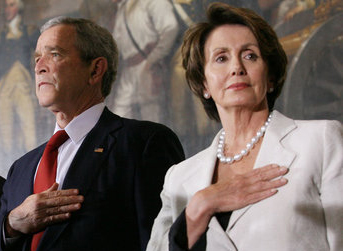 The Democrats regained the House in 2006, and in January 2007 Nancy Pelosi was elected Speaker, second in line for the White House after the Vice President. According to American Enterprise scholar Norm Ornstein, the period from 2009 to 2010, during whi
The Democrats regained the House in 2006, and in January 2007 Nancy Pelosi was elected Speaker, second in line for the White House after the Vice President. According to American Enterprise scholar Norm Ornstein, the period from 2009 to 2010, during whi.jpg) ch Democrats controlled the House, Senate, and the White House under Obama, was one of the “most productive congressional sessions of the last century” (Kroll). Under Pelosi’s leadership the $840 billion stimulus package, the Affordable Care Act, the Dodd-Frank banking reform bill and the Lilly Ledbetter Fair Pay Act were passed among other significant measures.
ch Democrats controlled the House, Senate, and the White House under Obama, was one of the “most productive congressional sessions of the last century” (Kroll). Under Pelosi’s leadership the $840 billion stimulus package, the Affordable Care Act, the Dodd-Frank banking reform bill and the Lilly Ledbetter Fair Pay Act were passed among other significant measures.
In 2010, with the rise of the Tea Party, the Republicans regained the House of Representatives and Pelosi returned to her role as minority leader. When the Democrats won back their majority in the mid-term elections of 2018, she was again elected Speaker. Now in charge of a younger, more diverse caucus with more minority and women members, Pelosi is the nation’s most powerful opponent of President Trump and his administration, and has challenged him on issues from his immigration policy to his government shutdown – she refused let him to hold his State of the Union address until it was reopened. Referring to Trump’s behavior during the shutdown Pelosi commented, “As a mother of five and a grandmother of nine I know a temper tantrum when I see one.”
.jpg)
Throughout her career Pelosi has been a consistent supporter of LGBT rights, including the right to marriage, as well as of the right to abortion and gun control legislation. Protecting the environment and dealing with climate change are also important issues on her agenda. They reflect her underlying motivation:
I view my role in politics as an extension of my role as mother and grandmother. The reasons I came to Congress are simple: the children, the children, the children….Being a grandmother is a constant reminder of the need to build a stronger future for the generations to come. That means protecting our precious environment, ensuring a good education and a wealth of opportunities for every American, and preventing our grandchildren from being burdened with mountains of debt. (Povich 141)
.jpg)
.jpg)
Pelosi has been a strong supporter of women in government and sees her achievement in historical terms, as she noted in her speech on assuming the Speakership in 2007:
And today, I thank my colleagues. By electing me Speaker, you have brought us closer to the ideal of equality that is America’s heritage and hope. This is an historic moment – for the Congress, and for the women of this country. It is a moment for which we have waited more than 200 years. Never losing faith, we waited through the many years of struggle to achieve our rights. But women weren’t just waiting; women were working. Never losing faith, we worked to redeem the promise of America, that all men and women, are created equal. For our daughters and granddaughters, today we have broken the marble ceiling.
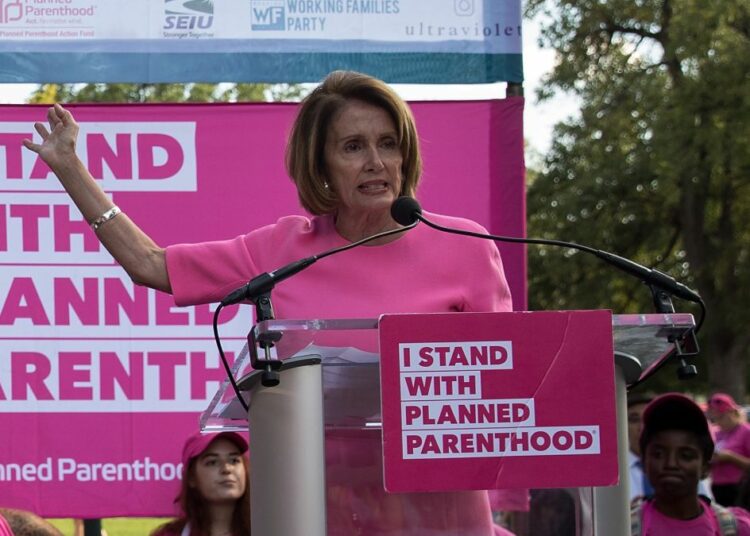
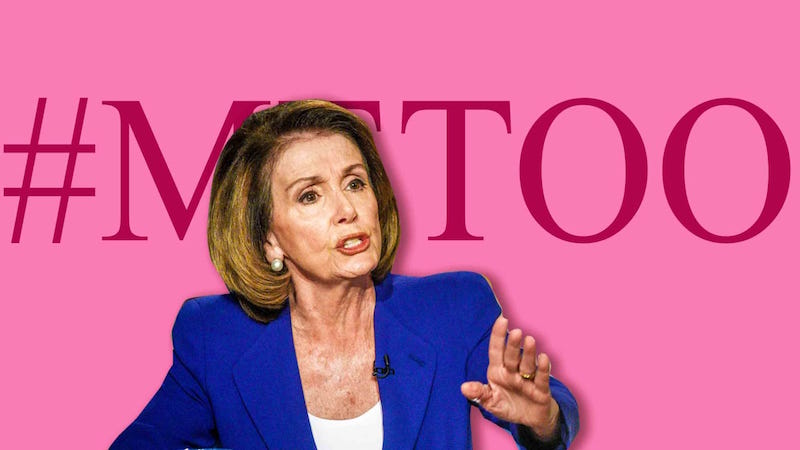
Author: Joey Horsley
Links
Women in Power. Nancy Pelosi. Oct. 27, 2016. Washington Post.
Nancy Pelosi. Feminist Majority Foundation. Feminist Daily Newswire. (Mar. 25, 2020)
iHeartRadio. Jan. 7, 2020. Who is Nancy Pelosi? podtail.com.
https://podtail.com/de/podcast/who-is/who-is-nancy-pelosi/ (Mar. 25, 2020)
Guardian News. Jan. 3, 2019. 'Transparency will be the order of the day': Nancy Pelosi elected House speaker.
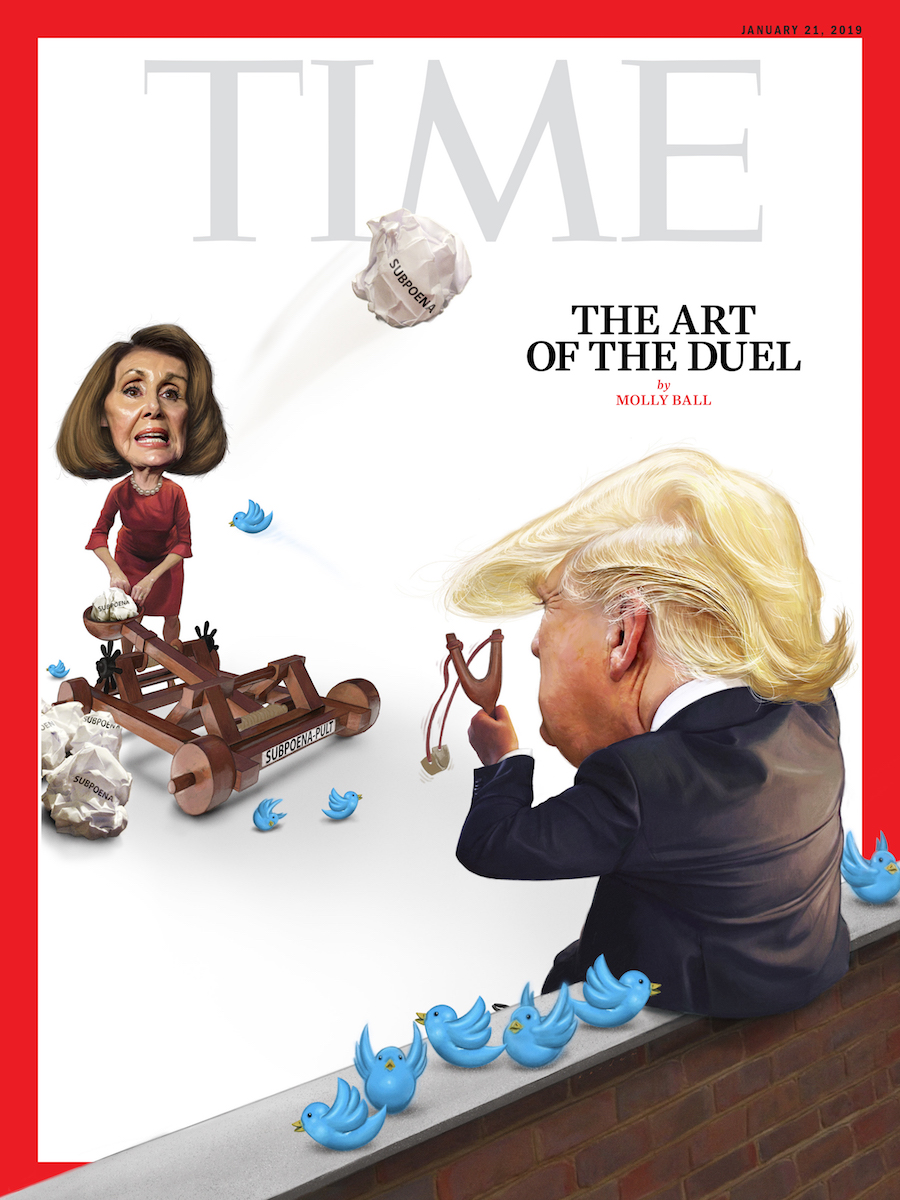 McGann, Laura. Nov. 26, 2017. Nancy Pelosi is that woman. Pelosi’s performance on Meet the Press is why so many women don’t come forward about sexual harassment. Vox.
McGann, Laura. Nov. 26, 2017. Nancy Pelosi is that woman. Pelosi’s performance on Meet the Press is why so many women don’t come forward about sexual harassment. Vox.
https://www.vox.com/2017/11/26/16702090/nancy-pelosi-conyers-sexual-harassment (Mar. 25, 2020)
Quince, Annebelle. Phillips, Keri. 2020. Podcast: Nancy Pelosi the most powerful woman in US politics. Australian Broadcasting Corporation.
https://www.abc.net.au/radionational/programs/rearvision/nancy-pelosi/11659016 or https://podcasts.apple.com/de/podcast/nancy-pelosi-the-most-powerful-woman-in-us-politics/id135114451?i=1000459272279 (Mar. 25, 2020)
Schnall, Marianne. Sep. 9, 2011. Conversation with Nancy Pelosi.
https://www.feminist.com/resources/artspeech/interviews/nancypelosi.html (Mar. 25, 2020)
Schnall, Marianne. Oct. 30, 2018. 'Don't Agonize, Organize': Why Nancy Pelosi wants more women in Washington. Forbes.
https://www.forbes.com/sites/marianneschnall/2018/10/30/insights-and-wisdom-on-womens-leadership-from-nancy-pelosi/#11688ee263f0 (Mar. 25, 2020)
Stuart, Tessa. Wenner, Jann S. Feb. 27, 2019. Nancy Pelosi: The Rolling Stone Interview. rollingstone.com.
Online verfügbar: https://www.rollingstone.com/politics/politics-features/nancy-pelosi-trump-interview-797209/ (Mar. 25, 2020)
The New York Times. Jan. 3, 2019. How Nancy Pelosi Became the Most Powerful Womean in U.S. Politics. NYT News.
Brennan, Margaret. Nov 17, 2019. Full Interview with House Speaker Nancy Pelosi. Face the Nation.
Literature & Sources
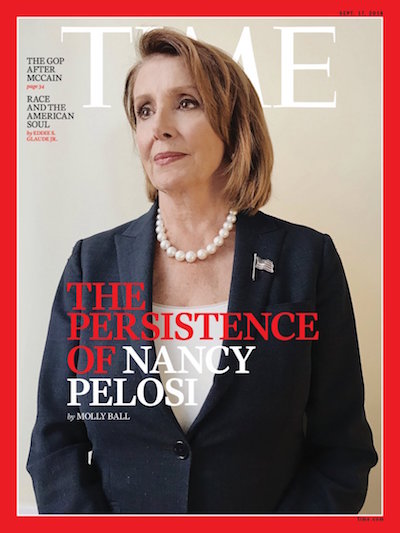 Ball, Molly. 2018. “Nancy Pelosi Doesn’t Care What You Think of Her. And She Isn’t Going Anywhere.” Time. Sept. 17, 2018. Vol 192 No 11. http://time.com/magazine/us/5388333/september-17th-2018-vol-192-no-11-u-s/
Ball, Molly. 2018. “Nancy Pelosi Doesn’t Care What You Think of Her. And She Isn’t Going Anywhere.” Time. Sept. 17, 2018. Vol 192 No 11. http://time.com/magazine/us/5388333/september-17th-2018-vol-192-no-11-u-s/
Beinert, Peter. 2018. “The Nancy Pelosi Problem.” The Atlantic. April 2018. https://www.theatlantic.com/magazine/archive/2018/04/the-nancy-pelosi-problem/554048/
Kroll, Andy. 2015. “The Staying Power of Nancy Pelosi.” The Atlantic. Sept. 11, 2015. https://www.theatlantic.com/politics/archive/2015/09/the-staying-power-of-nancy-pelosi/440022/
Nancy Pelosi Video interview produced by Makers: Women Who Make America: https://www.makers.com/profiles/591f27c3a8c7c4265c6428c1
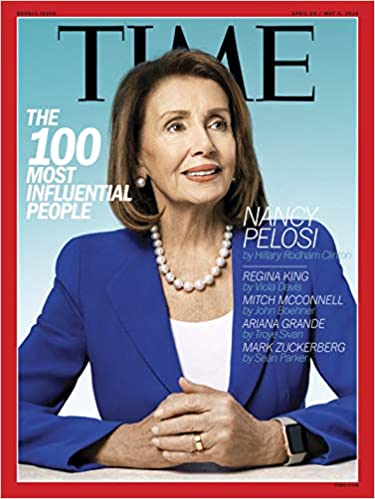 Nancy Pelosi. Speaker of the House (Website) https://www.speaker.gov.
Nancy Pelosi. Speaker of the House (Website) https://www.speaker.gov.
Pelosi, Nancy and Amy Hill Hearth. 2008. Know Your Power: A Message to America’s Daughters. Doubleday.
Povich, Elaine. S. (2008). Nancy Pelosi: A Biography. Westport, CT: Greenwood.
Sandalow, Marc. 2008. Madam Speaker: Nancy Pelosi’s Life, Times, and Rise to Power. Modern Times.
Stolberg, Sheryl Gay. 2019. “Nancy Pelosi, a Woman in Control, Is a Rival Who Flummoxes Trump. New York Times. Jan 24, 2019. https://www.nytimes.com/2019/01/24/us/politics/nancy-pelosi-donald-trump.html?action=click&module=Top%20Stories&pgtype=Homepage
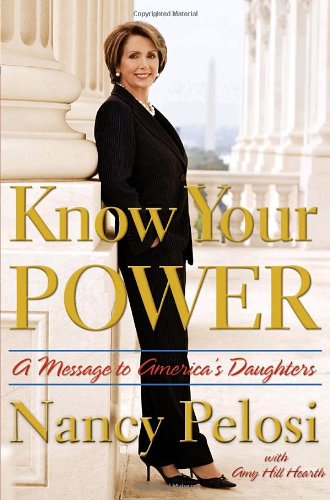
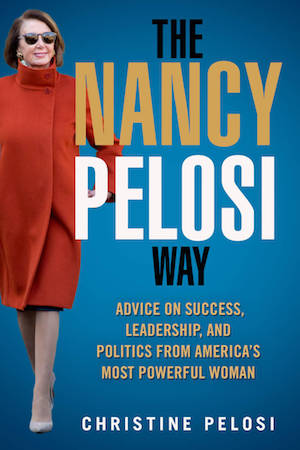
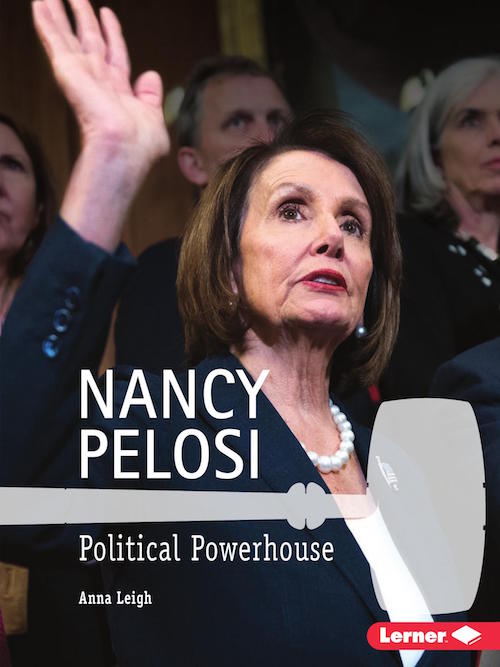
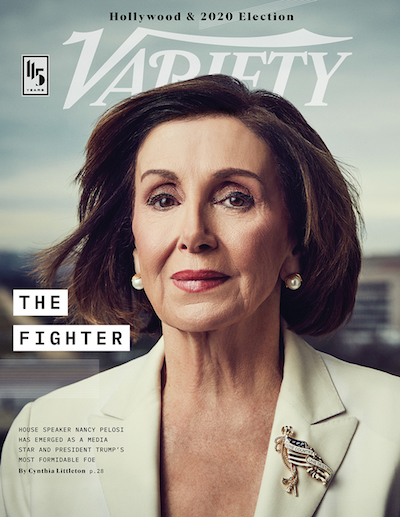
If you hold the rights to one or more of the images on this page and object to its/their appearance here, please contact Fembio.


